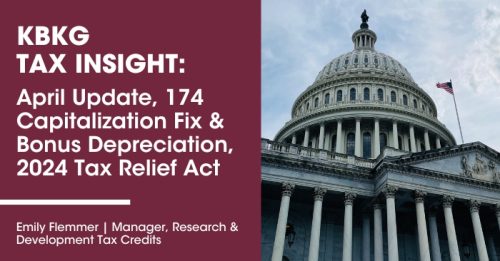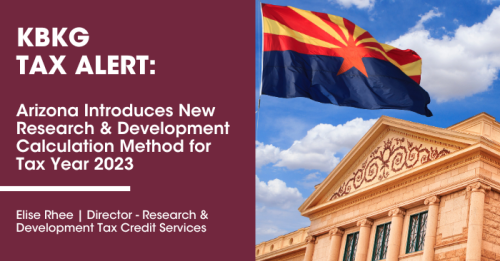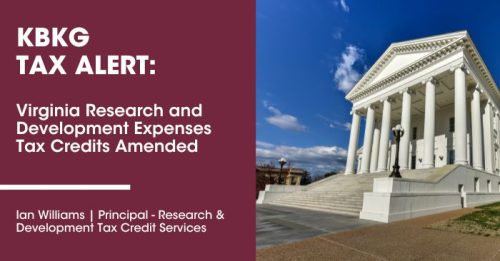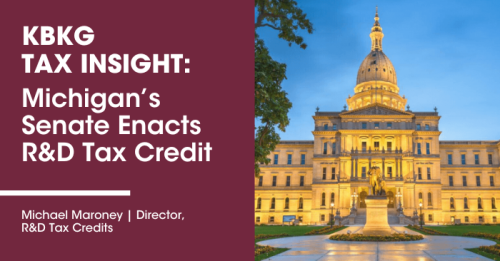What We Do
Here at KBKG, we understand that all individuals, companies, and accounting systems are different. We are a client-centric firm with a primary objective of delivering value to those that we serve. We offer a wide range of services that cater to your specific needs and interests. Let’s start a conversation and see what we can do together.
Give us a call at 877-525-4462
Questions about tax credits, deductions, or cost recovery?
RECENT NEWS FROM KBKG

KBKG Tax Insight: April Update, 174 Capitalization Fix & Bonus Depreciation, 2024 Tax Relief Act
KBKG Tax Insight: April Update, 174 Capitalization Fix & Bonus Depreciation, 2024 Tax Relief Act By Emily Flemmer | Manager,

Arizona Introduces New Research & Development Calculation Method for Tax Year 2023
KBKG Tax Alert: Arizona Introduces New Research & Development Calculation Method for Tax Year 2023 By Elise Rhee| Director, R&D

Virginia Research and Development Expenses Tax Credits Amended
KBKG Tax Alert: Virginia Research and Development Expenses Tax Credits Amended By Ian Williams| Principal, R&D Tax Credits Effective July

Michigan’s Senate Enacts R&D Tax Credit
KBKG Tax Insight: Michigan’s Senate Enacts R&D Tax Credit By Michael Maroney | Director, R&D Tax Credits On March 19,
SUBSCRIBE
Subscribe to receive the latest IRS updates, state and federal tax-related news, and information on industry-specific credits and incentives.













